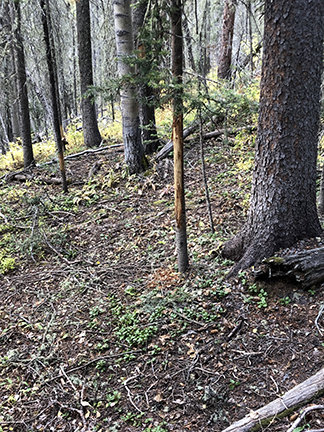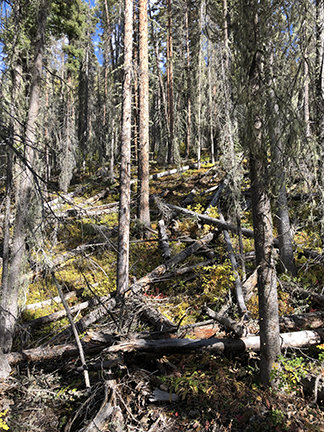Howdy everyone,
I'm new to posting on the forum but already a fan. Thanks to everyone who is here sharing in this amazing community. I have a question about elk and their use of rubs, seasonally, as it pertains to archery season. I do a lot of scouting, and a lot of hiking in Elk country, and am constantly exploring new areas, so I don't often return to the same areas and units year after year. My question is: if I am out scouting and find an area with a significant density of rubs (lets say 5-10 rubs in a 200 yard circumference), is this an area the elk will return to next season? I am trying to hone-in on a few areas on one unit this coming year instead of always bouncing around to new places, and I am trying to dig-in a bit more to understand Bull elk behavior. Figured there may be a few experts here
Last year I found an area when I was doing some early scouting for late season rifle elk, and it was torn up and stunk like a barnyard. In my head I was thinking 'oh boy, this is where the big dog lives', but from what I have interpreted, that may not be the case year after year. I would love to return to that area this coming year for archery season, but don't want it to just be a pretty hike, if you know what I mean
Thanks in advance and apologies if this is a rookie question!
Posted some pics below. the first pic shows one of the rubs, and there were three more just like that within twenty feet. Then as the circle widened around that area, there were more rubs further out. Second pic shows what the area looked like ten feet away. pretty much giant piles of deadfall and brush. 20-40 degree slopes. Five miles in....Was fun getting back out of there, haha.
I'm new to posting on the forum but already a fan. Thanks to everyone who is here sharing in this amazing community. I have a question about elk and their use of rubs, seasonally, as it pertains to archery season. I do a lot of scouting, and a lot of hiking in Elk country, and am constantly exploring new areas, so I don't often return to the same areas and units year after year. My question is: if I am out scouting and find an area with a significant density of rubs (lets say 5-10 rubs in a 200 yard circumference), is this an area the elk will return to next season? I am trying to hone-in on a few areas on one unit this coming year instead of always bouncing around to new places, and I am trying to dig-in a bit more to understand Bull elk behavior. Figured there may be a few experts here
Last year I found an area when I was doing some early scouting for late season rifle elk, and it was torn up and stunk like a barnyard. In my head I was thinking 'oh boy, this is where the big dog lives', but from what I have interpreted, that may not be the case year after year. I would love to return to that area this coming year for archery season, but don't want it to just be a pretty hike, if you know what I mean
Thanks in advance and apologies if this is a rookie question!
Posted some pics below. the first pic shows one of the rubs, and there were three more just like that within twenty feet. Then as the circle widened around that area, there were more rubs further out. Second pic shows what the area looked like ten feet away. pretty much giant piles of deadfall and brush. 20-40 degree slopes. Five miles in....Was fun getting back out of there, haha.






